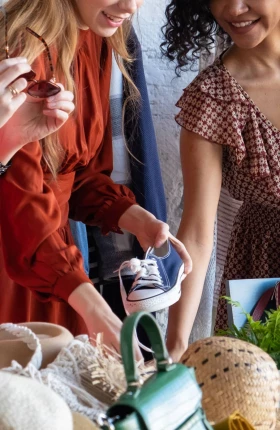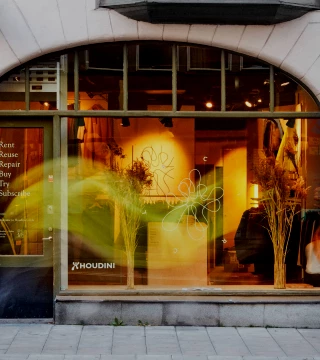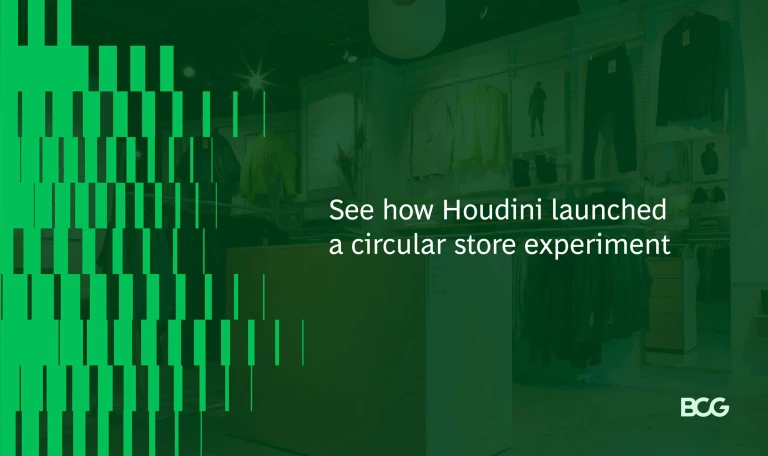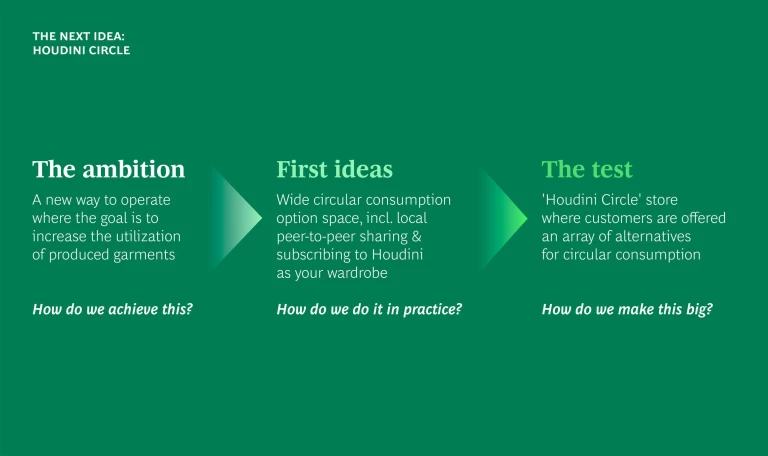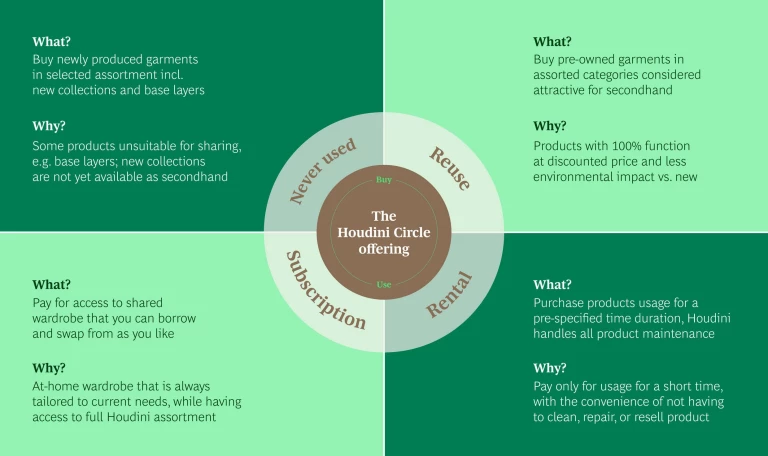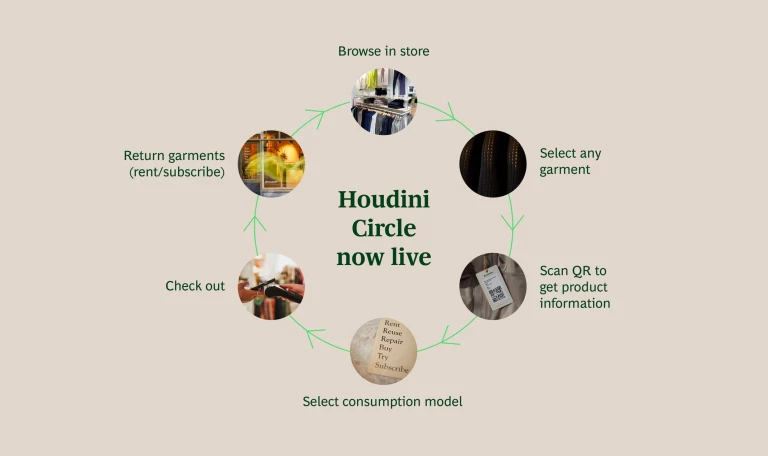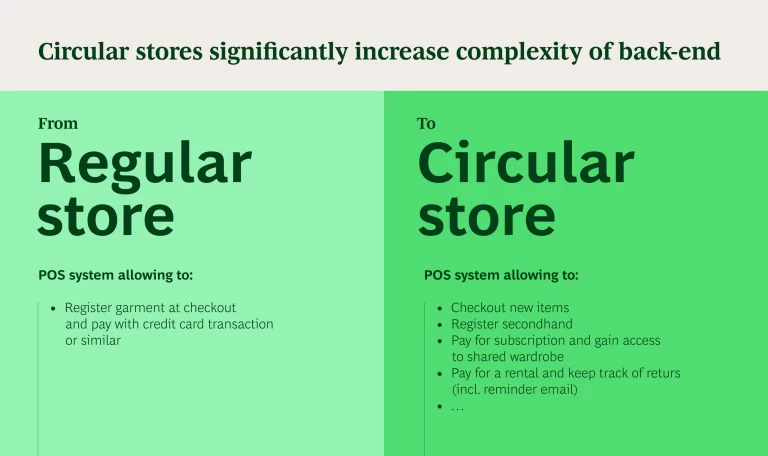Retailers face mounting pressure to change their business models. Many are undertaking ambitious initiatives to decarbonize along their value chain, working to decrease emissions both by upstream suppliers and internally. However, the greatest potential for retail decarbonization lies in the underlying driver of these retailers’ environmental footprint: how consumers use and buy their products.
Is Circularity the Solution?
Circularity is a rightfully hot topic in the quest for sustainability. It means moving away from the linear value chain–where retailers sell newly produced products never to see them again–and instead entails creating a value chain that slows and closes the material loop. A variety of circular sales models can increase the utilization of each garment, including renting, subscribing, sharing, repairing, reusing, recycling, and more.
Circularity’s success relies on shifting consumer behavior. Consumers must move away from strictly purchasing what they need, decouple ownership from usage, and consume products in various ways depending on situation-specific need. Renting may be superior for time-constrained needs. Subscription models could be favorable when needs are fast changing, and models for reusing materials and parts may be suitable for tech products.
The Industry Struggles to Find a Financially Sustainable Model for Circularity
Despite the buzz surrounding circularity and its potential in the retail industry, the challenge of designing financially sustainable business models around it remains unresolved. Recent years have seen many attempts across the retail sector, but low success rates. Often, the circular aspect of an apparel store is a few garments, of limited sizes, in a corner for resale or rent.
A challenge faced by circular retail business models is the often-large costs that are difficult to recoup from consumers. These costs stem from retailers’ need to manage product flows across sales cycles–as opposed to selling items one-off–which includes handling product flow logistics, performing quality controls, and washing and relisting returned products. To achieve financial sustainability, retailers must increase consumers’ willingness to pay for circular models by creating clear upsides when compared to linear consumption.
To unlock a compelling value proposition around circular models, retailers must build on a thorough understanding of consumer preferences, combined with a changed view of the value of products in stock in consumers’ homes as well as within retailers.
Would you leave money sitting in a closet?
BCG & Houdini Joined Forces to Rethink Consumer Behavior and Conduct a Circularity Experiment
The first step on this journey was setting up a physical store to pilot the ‘Houdini Circle’ concept, collecting learnings about consumer behavior and operational challenges and opportunities. During 2023, During 2023, BCG joined forces with Houdini to set up this experiment, supporting the development of pricing models and store backend setup. We took away three key learnings from the experiment.
LEARNING I: Appealing Value Proposition to change Customer Behavior
The idea of a fully circular store is new to consumers and difficult to understand–there are many different interpretations in the markets and consumers are confused by the options. The first step is therefore to clearly define what consumer needs are being addressed, how different circular services complement each other, and how to communicate and explain this to customers. For example, why offer both rental and subscription? How do you communicate the benefits of both to consumers? The decision between in-store and online offerings is also important: it impacts the viable sustainable business model design and geographical reach, and it determines the requirements for physical & IT infrastructure and the OPEX & CAPEX profiles of the business. Additionally, the value proposition and offering should prioritize extended usage over several seasons and years, emphasizing items resistant to fashion shifts and trends.
LEARNING II: Solid Pricing Models to Achieve more from less
Circular models introduce the need for new pricing systems in which a specific product SKU has multiple prices depending on the sales model. This requires a simple yet robust approach to ensure profitability. Prices should adhere to a well-defined logic, anchored in an understanding of consumers’ willingness to pay for product usage as well as the company’s costs associated with offering the circular consumption model. Prices may also vary depending on key drivers of willingness to pay, including item condition and attractiveness. Introducing several prices for the same product also requires that the prices are cross-checked to be internally consistent so offerings fulfilling similar customer needs are consistently priced.
LEARNING III: Robust System Architecture and Support to enable a Seamless Customer Journey
A key enabler is adjacent system architecture and support. Retailers commonly find that their systems cannot handle the increased complexity of circular models. Especially problematic is the fact that retailers need product and customer traceability, enabling them to monitor product availability in store as well as to follow up with customers when products are not returned promptly. Circular models may also require setting up recurring payments, for which many linear retailers lack the technical capabilities. Circular-ready platforms and solutions have emerged on the market in recent years, accommodating circular as well as linear models and the tracking of individual products and customers. However, challenges exist with these players, including that they are typically young companies focused on e-commerce–to date only a handful of solutions are tailored to physical retail.
STORE NOW LIVE: Sneak Peek into Performance and Next Steps
In its first weeks, the Houdini circular store has been very well received by customers and the retail industry at large. Reuse and new have been the two most successful models in terms of sales, 60% of sales from reuse and 40% new and for subscription there is clear interest. Rental has so far been a minor share, but expected to pick up closer to ski holidays. The revenue of the circular store is a testimony of its success: it achieved the same level of revenue as the older regular store even within the first few months. We are still experimenting together, and Houdini’s circular store is just the first step on the journey to unlock the full potential of each garment. Going forward, the plan is to refine the concept and make it even more clear to customers, combined with unleashing the value of peer-to-peer exchanges, as well as seasonal dynamics together with expanding Houdini Circle to omnichannel.
Learn more about the Houdini Circle
Creating Responsible Consumer Behavior Together
Circularity is one way to solve one of the most disruptive challenges the retail industry has ever faced. We have only just started to uncover what this journey will entail. It will require that retailers not only reimagine their value propositions but also actively shape consumer behavior, all while unlocking a world of innovative business models that tap into new value pools.
A retail industry that does not over consume natural resources can last a long time. This is where the retail industry needs to go to carve out its niche in the oncoming low-carbon world. Join us on the journey to reinvent retail and collaboratively forge a more responsible future–starting today.
What can you do in your industry?
Meet Our Experts
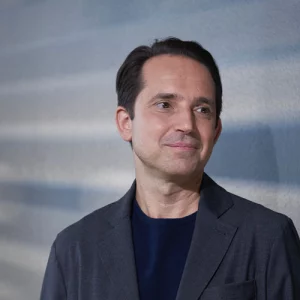

Further Readings

